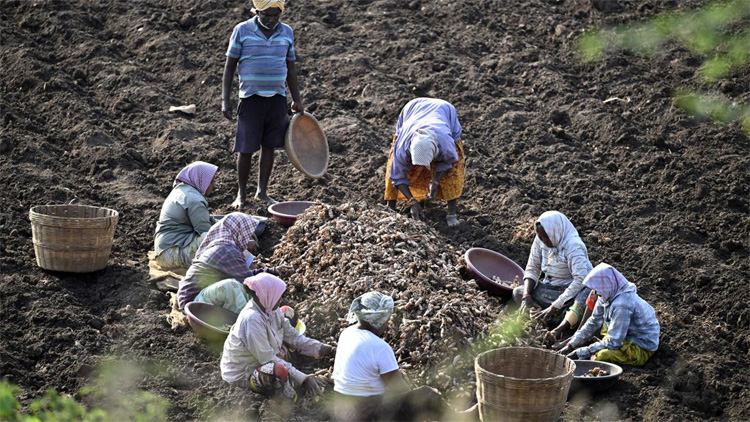‘Staggering’ number of workers face climate hazards, says UN
A large majority of workers worldwide are facing a cocktail of health hazards linked to climate change, the United Nations said on Monday, warning that existing regulations offered inadequate protection.
A large majority of workers worldwide are facing a cocktail of health hazards linked to climate change, the United Nations said on Monday, warning that existing regulations offered inadequate protection.
“A staggering number of workers are already being exposed to climate change-related hazards in the workplace and these figures are only likely to get worse,” the UN’ International Labour Organization said in a report.
Farm workers and others who carry out heavy labour in hot climates “may be exposed to a cocktail of hazards”, the ILO said.
These hazards include excessive heat, UV radiation, air pollution, vector-borne diseases and agrochemicals.
Those working in hot indoor environments or poorly ventilated spaces are also at risk.
“Workers are most exposed to climate change hazards yet frequently have no choice but to continue working, even if conditions are dangerous,” the ILO said in its report.
‘70% workers affected’
It pointed out that in 2020, the last year for which statistics are available, 2.4 billion workers, or more than 70% of the global workforce, were estimated to be exposed to excessive heat at some point.
That marks “a clear increase”, Manal Azzi, the ILO’s senior specialist on occupational safety and health said in Geneva.
The number of exposed workers had ballooned by 35% over two decades and even adjusting for the growing global population, the percentage of labour force affected had swelled by 8.8% since year 2000, Ms. Azzi said.
“This is a huge issue,” Azzi said, warning that “workers are often forgotten when we’re talking about climate change, and the health impacts are very severe”.
‘19,000 lives lost’
Almost 23 million occupational injuries attributed to excessive heat are reported each year, costing, on estimate, 19,000 lives annually.
And those numbers do not include the more than 26 million people who live with chronic kidney disease linked to workplace heat stress, the ILO said.
Furthermore, the impact of global warming on workers goes well beyond heat exposure.
The ILO noted that numerous dangerous health conditions in workers had been linked to climate change, including cancer, cardiovascular disease, respiratory illnesses, kidney disfunction and mental health conditions.
The ILO said 1.6 billion workers worldwide were estimated to be exposed to ultraviolet radiation each year, with more than 18,960 work-related deaths annually from non-melanoma skin cancer.
Workplace pollution
Another 1.6 billion people were likely to be exposed to workplace pollution, resulting in up to 860,000 deaths among outdoor workers annually.
More than 870 million agricultural workers are meanwhile likely to be exposed to pesticides, with more than 300,000 deaths attributed to pesticide poisoning each year.
15,000 work-related deaths annually are attributed to exposure to parasitic and vector-borne diseases, the ILO said.
“It’s clear that climate change is already creating significant additional health hazards for workers,” Ms. Azzi said in a statement.
“It is essential we heed these warnings. Occupational safety and health considerations must be part of our climate change responses, both policies and actions,” she said.
‘New laws required’
The ILO said climate change hazards could require countries to re-evaluate existing legislation or create new laws to protect workers properly.
The ILO will next year host an expert meeting with representatives of employers, labour and governments to discuss the issue, aiming to come up with fresh policy recommendations, Ms. Azzi said.

